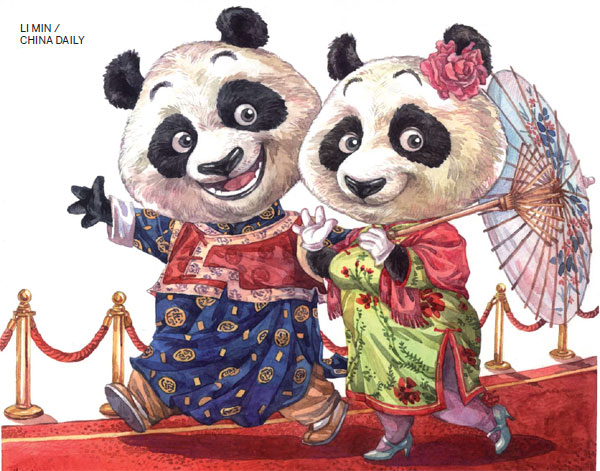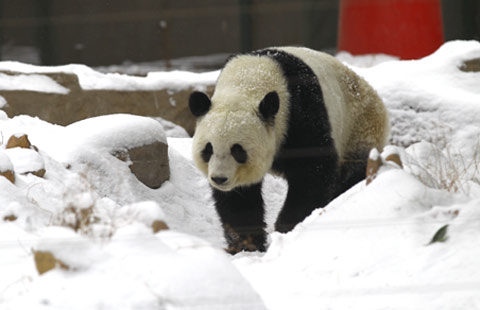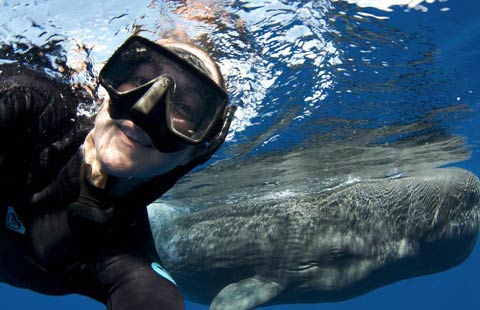Panda power
Updated: 2014-02-28 08:41
By Erik Nilsson (China Daily Europe)
|
|||||||||||

The commotion over two new residents of a Belgian zoo throws more light about an animal everyone seems to love
Giant pandas are so celebrated that it was no surprise that a photo of a panda munching bamboo in the business-class seat of an Air China flight went viral, even if it turned out to be a hoax.
That image's instant popularity, and the fact that it was even created, is yet more evidence of the cachet pandas enjoy. There is no doubt that one of China's best-known symbols is also one of the planet's most loved animals.
When a pair of pandas flew from China to Canada last March, FedEx decked out the chartered aircraft's exterior with images of the creature chomping bamboo and dubbed the flight Panda Express. Pandas, it seems, never have to worry about being shunted into cattle class, and on this flight the usual first-class fare was laid on: 100 kilograms of bamboo, 150 kg of shoots, 50 kg of apples and 15 kg of water, with a vet and two attendants on hand to cater to the animals' every whim.
"In-flight catering and a comfortable cabin temperature for the pandas should make for an enjoyable journey halfway across the world," the company said in a blog.
On arrival they were given red-carpet treatment by Canadian Prime Minister Stephen Harper, his wife and Chinese Ambassador Zhang Junsai.
As with the flight, this was no more than the treatment that pandas have come to expect.
On Feb 23, Belgium's Prime Minister Elio Di Rupo welcomed the two latest jetsetting pandas, Xing Hui and Hao Hao, accompanied with schoolchildren's cheers, as they arrived in Brussels.
Not only are pandas accustomed to rubbing shoulders with kings, queens and other potentates, their very touch seems to have the Midas about it. That may explain why the Kung Fu Panda film franchise has been such a box office hit, and why the book Hello, I Am a Panda, by Tan Kai, published in 2013, has been so successful.
There was even a media clamor when what has been billed as the world's first panda-themed hotel opened near Emei Mountain in Sichuan province in 2012. Anyone staying in the hotel will never be far from a piece of art depicting pandas in various roles, including astronaut, pianist and princess, and staffers don, and sometimes dance around in, panda costumes.
Beyond films, books and hotels, the animals' images adorn every product imaginable, from cigarettes to toilet seat covers.
So why is the world so enamored with the panda, and what, if anything, does it all say about China's image?
Forty-eight years ago the zoologist Desmond Morris, in his book Men and Pandas, looked at why people like them. He divined 20 reasons for people finding pandas irresistible, including their flat faces, the illusion of large eyes, baby-like proportions, fluffiness, playfulness and clumsiness.
Henry Nicholls, author of the book The Way of The Panda: A Curious History of China's Political Animal, goes well beyond faces and fluffiness in his search for answers.
"In the 1950s, the Chinese Communist Party began to fashion the panda as a national treasure, a creature owned by Chinese - valuable, rare and coveted by the rest of the world.
"Around the same time, (the World Wildlife Fund) fashioned the panda into the face of global conservation. These two acts combined to give the panda extraordinary cultural significance. As China has grown in economic strength, so the panda's power has grown."
The WWF chose the panda as its logo when it was founded in 1961, although the organization would not work in China until more than 20 years later.
It based the image on the likeness of Chi Chi, who arrived at London Zoo that year.
"Max Nicholson, one of the founders, later said the WWF panda was one of the most valuable trademarks that has ever been devised, and it took about 20 minutes' to decide," Nicholls says.
"The real reason for choosing the panda was threefold: It had to communicate endangerment, look good and, crucially, be recognizable when printed in black-and-white. In 1961 the organization's brochure explained its logo by saying the panda 'owes its survival to the sort of careful conservation which all wild creatures deserve'."
WWF says this vision has not changed.
"Although other animals might not get the special attention pandas do, they're protected because of the panda," says WWF China's species program director Fan Zhiyong.
He cites as primary beneficiaries red pandas, black bears, golden monkeys, crested ibises and serows.
"Chinese people pay much more attention to pandas now. So pandas receive better protection compared with 30 years ago."
That is partly because of their power as a brand, experts say, which is what worked for Jing Jing as one of the five mascots for the Beijing Olympic Games in 2008, a kind of international coming-out party for China.
But pandas have served as channels of China's soft power since dynastic times. The first recorded instance was when the Tang Dynasty Empress Wu Zetian (625-705) sent a pair to Japan's emperor.
Perhaps the most celebrated modern moment of so-called panda diplomacy was when premier Zhou Enlai offered the US first lady Pat Nixon a pair after her husband's icebreaking visit in 1972.
Today's Top News
Ukraine mobilizes after Putin's move
Manhunt after China's terror attack
War in Ukraine a long shot, experts say
Beijing-area air better than before
EU condemns China's terrorist attacks
Abe 'shut the door': spokesman
Putin not yet decided on use of force in Ukraine
28 dead in Kunming violence
Hot Topics
Lunar probe , China growth forecasts, Emission rules get tougher, China seen through 'colored lens', International board,
Editor's Picks

|

|

|

|

|

|





